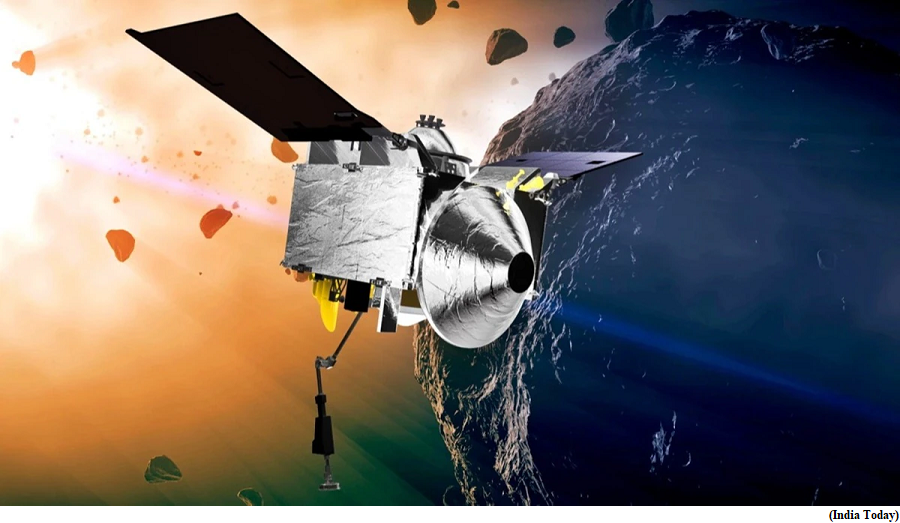NASA renames mission going to asteroid Apophis after returning rocks from Bennu (GS Paper 3, Science and Technology)

Why in news?
- The OSIRIS-REx spacecraft that delivered asteroid samples from Bennu, has embarked on a new mission, and NASA has renamed it.
- The mission will now be called OSIRIS-APEX as it heads to study the near-Earth asteroid Apophis.
Details:
- The OSIRIS-REx mission made headlines when it successfully returned a sample from asteroid Bennu to Earth on September 24. After a seven-year, 4 billion-mile odyssey, the spacecraft still had ample fuel and fully functional instruments.
- Seizing this opportunity, NASA repurposed the spacecraft for the OSIRIS-APEX mission, to capture Apophis' close flyby of Earth in 2029.
Apophis:
- Apophis, a stony "S-type" asteroid composed of silicate materials and nickel-iron, differs significantly from the carbon-rich "C-type" Bennu.
- The upcoming encounter with Earth on April 13, 2029, will bring Apophis within 20,000 miles (32,000 kilometers) of our planet, nearer than some geostationary satellites and potentially visible to observers in the Eastern Hemisphere.
- Such close approaches by asteroids of Apophis' size, approximately 367 yards (340 meters) in diameter, are estimated to occur only once every 7,500 years.
OSIRIS-APEX mission:
- The OSIRIS-APEX mission aims to observe the physical changes induced by Earth's gravitational pull during Apophis' flyby.
- These changes could include alterations in the asteroid's orbit, rotation speed, and surface features such as quakes or landslides.
- Before its historic meeting with Apophis, OSIRIS-APEX will undergo a series of close solar passes and gravity assists from Earth to align its trajectory.
India to replace Maitri research station in Antarctica by 2029
(GS Paper 3, Science and Technology)
Why in news?
- India has decided to build a new research station in Antarctica, replacing its Maitri station.
- The Maitri-2 station will be established in East Antarctica near the existing one, and it will be able to house about 90 scientists.

Details:
- The establishment of the new research facility will enhance the quality of Indian research.
- The existing station, Maitri, was set up in 1988 and was supposed to be operational for ten years only.
- The station will be ready to use by 2029.
- The new research base will adhere to environmental protocols laid out by international bodies and the Indian Antarctic Act passed in 2022.
Countering the China threat:
- India’s strategic Antarctica move comes at a time when China is making wide strides in the research space for the White Continent.
- China is already on its way to building its fifth research base on the continent, for which it has dispatched more than 450 personnel to the snowy continent.
Background:
- Dakshin Gangotri, India's first research station in Antarctica, was commissioned in 1983. However, it had to be abandoned in 1989 after being submerged in snow.
- India has been operating the Bharati research station in the Larseman Hills area, a 40 square kilometre ice-free region along the south-eastern shore of the continent since 2012.
- Bharati is about 3,000 kilometres away from Maitri, which was commissioned in 1989.



